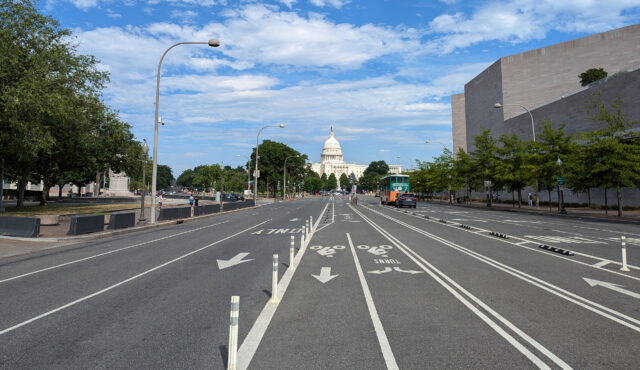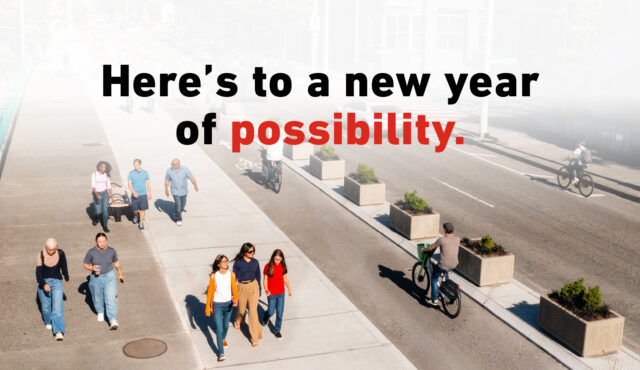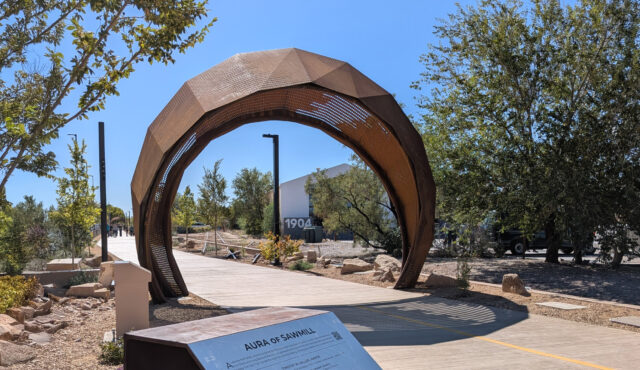We are constantly inspired by the next generation of transportation professionals. Toole Design’s 2023 cohort of interns is no exception.
Over the course of the summer, our interns worked alongside planners, landscape architects, and engineers in 6 of our 19 offices across North America. They participated in design charrettes, learned new software, and conducted field work. They also collaborated on a group research project about the concerning increase in vehicle size and weight.
Read on to learn about these talented young professionals — and to learn from their research on the trend toward larger, heavier vehicles.
Meet our 2023 Interns

Moctar’s favorite experience at Toole Design was going out in the field for the Douglas Road Safety Audit. “I enjoyed interacting with the major representatives,” said Moctar, “and learning more about Douglas, RSAs, and building the report.” He will be continuing at Toole Design into the fall and looks forward to designing bike parking facilities.

During Nasir’s internship, he collected data and attended stakeholder meetings for the ODOT District 8 Active Transportation Plan. One key takeaway was learning the value of community engagement and being open to all comments. Nasir also sharpened his technical skills by utilizing QGIS and Fulcrum.

Ever enjoyed having meaningful conversations and learning from senior staff at Toole Design while he worked on the WSDOT Connecting Communities project. He also learned how to use MicroStation and is excited to see his rendered graphics on the benefits of Complete Streets be included in the final report.
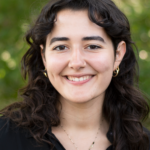
Nia’s favorite project was working on the TxDOT San Antonio Bikeway. “I enjoyed using Google Maps to explore the San Antonio area,” said Nia, “and then implementing what I saw into the maps.” Nia was excited to see some of the roads she worked on in person when passing through San Antonio after her internship.

As an intern with the Silver Spring office, Robbie gathered and coordinated GIS data for the VDOT NOVA Bike/Ped Network Study. “My favorite part was seeing how a project evolves from start to finish,” he said. From working closely with clients to investing long hours on the project, Robbie felt a sense of ownership by the end of his internship.

One of Saira’s favorite experiences during her internship was working on the Bellingham Bicycle and Pedestrian Plan. “I enjoyed coding the survey and WebMap responses,” said Saira, “and seeing insights from community members.” She also helped with the Ashland STP Walk Audit, where she got to take part in field work and finalize the STP document.
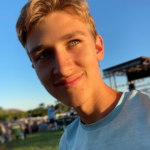
Petru worked on multiple regional projects from the Boston office. One of his favorite projects was the Northampton Main Street Reconstruction, where he used Synchro Software and AutoCAD to design traffic signals for the corridor. From working to improve pedestrian safety to preparing a Complete Streets cost estimate, Petru shares, “I’ve been exposed to many key projects that will have real world impacts.”

As part of the Raleigh team, Tatiana worked on the Downtown Chapel Hill Mobility Study. “It was amazing to participate in the design charrette and all the way through to the draft final report,” said Tatiana. Designing graphics in Adobe Illustrator and working on the final report taught Tatiana the value of using deliverables to communicate effectively.
What our interns learned about the impacts of large, heavy vehicles
As part of the internship program, our interns completed research looking at the impact of large vehicles on deaths and serious injuries to vulnerable users. This topic was selected by Toole Design leadership in response to recent vehicle design trends.
The interns found that the shift toward larger and heavier vehicles results in an increased risk of pedestrian fatalities and serious injuries, particularly for certain population groups. Check out their key findings:
- SUVs, minivans, and pickup trucks — collectively known as light trucks — have higher masses, higher hoods, and lower visibility than cars.
- Electric vehicles also pose a risk, as they are heavier than gas-powered equivalents due to batteries.
- Pedestrian fatalities in the United States rose over 50% in the last decade. Low-income, Black, Hispanic, and Indigenous people are disproportionately affected.
- People are 2–3x more likely to die if hit by a light truck, particularly elderly pedestrians, children, and wheelchair users.
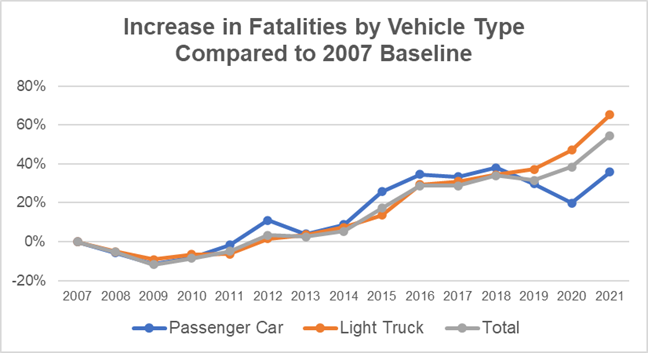
To address these impacts, the team explored how planners, engineers, and designers can reduce the incidence and severity of pedestrian crashes. Embedding the Safe System Approach and Transportation Demand Management (TDM) initiatives in the planning stage is a great place to start. We also need to optimize street design for the most vulnerable street users. Our interns recommended wider sidewalks, raised crossings, curb extensions, and protected traffic signal phasing as elements that can keep people walking, biking, and rolling safer.
We have enjoyed getting to know our interns over the past summer and look forward to where they take the future of transportation planning and design!
